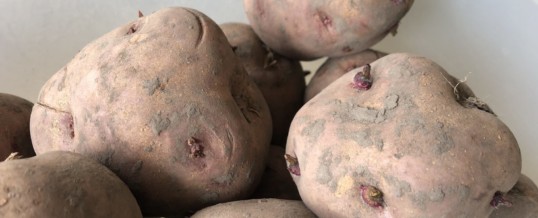
The Old Farmer’s Almanac said it was time for me to plant my potatoes and corn. But the weather forecast called for a gullywasher. That’s a fancy weather term for a lot of rain.
So I waited. And waited. And waited.
When the rain finally stopped, I was two weeks past when I should’ve had my potatoes and corn in the ground.
Now, I’m not the best at deciphering all that’s in the Farmer’s Almanac, but if I’m reading this correctly, I’m now planting while Venus has moved in front of another planet’s view of my garden.
I’m not sure what happens if Mars can’t see my taters, but I know my taters can see Mars.
The rain delay allowed them to grow plenty of extra eyes.
And I was always told that lots of potato eyes were necessary to have more potatoes grow off of your seed potato. I bought mine as soon as they were available, but the eyes were few and small, so the extra ones should help.
If you ask three different farmers how to plant potatoes or corn, you’re likely to get three different answers. It’s similar to asking someone for their chili recipe – but that’s a whole ‘nother column.
For seed potatoes (the red ones), I was always taught that there are two main planting methods. There’s the mound approach and the deep approach.
If you bury your seed potatoes just below the surface and mound them up with dirt and and/or cover them with leaves or other organic matter, when they finish growing, the new potatoes will be near or on the surface.
That makes them easier to find and put into your basket or sack during harvesting.
Other farmers say that to get more produce, bury each seed potato about nine inches deep and forgo the mounds. They claim that the potatoes that grow from that one will be more plentiful, you’ll just have to dig deeper and longer to find them all.
I’ve always used the surface method, but this year I’m trying the deep approach. Part of the reason is that if we get another frog floater (another official meteorological term) I’ll likely watch my efforts sail away down the creek next to the garden.
I’m also planting corn this year. Yellow Dent is what they call it. I think the name must come from the dent the deer always put in my corn crop every time I try to plant some. I mentioned to my wife that this was an opportunity to also have venison with our taters and corn, but she’s seen the movie Bambi, so that idea was dismissed.
But how accurate is The Farmer’s Almanac? The publisher claims 80% accuracy. But I watched several meteorologists on YouTube say that the almanac’s one-year forecast is only 50% accurate.
Some of these meteorologists are the same folks who don’t have a 50% batting average in a 24-hour forecast. So there’s that.
I like the Farmer’s Almanac, and grew up with a family who swore by it (a couple of them swore at it) and by and large, following the almanac’s advice on when to plant has, for the most part, turned out great results.
But since I missed the window of when it said I should’ve planted my potatoes and corn, and now Mars can’t see the taters and corn, much less the deer, I’m installing a motion light and a game camera.
That way, my potatoes and corn aren’t my only eyes and ears.
©2020 John Moore
John’s book, Write of Passage: A Southerner’s View of Then and Now, and his new book, Write of Passage Volume II, are available on Amazon and on John’s website at www.TheCountryWriter.com.
FEB
2020
